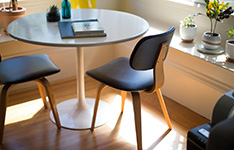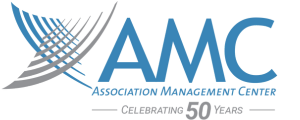
Sometimes Productivity Doesn’t Look Very Productive: Productivity Series Part 2
“Productivity is never an accident. It is always the result of a commitment to excellence, intelligent planning, and focused effort.” --Paul J. Meyer, top-selling author of personal development materials in the world.
In the first part of this productivity series, I shared tips from AMC’s Caffeine and Productivity SIG for making technology work for you. From key board shortcuts, to different software you can use, there are countless tools at our disposal. But, how can you supplement technology to increase your productivity? I’ve got 5 more techniques you can try. They might seem a bit unorthodox, but the best way to discover what works for you is to experiment and try different tools. Not all productivity journeys looks the same, but the end results should be similar!
Top 5 Productivity Tricks to Keep You Focused at Work
Track your progress.
It can be easy to lose track of the progress we make on larger projects, so celebrate your accomplishments (big and small) by tracking your progress. By breaking down your projects into smaller tasks, you can track your progress as you go. When you look back at what you worked on during the day, you should be able to see multiple “to-do’s” crossed off rather than that one big project still hanging out there.
This method will also allow you to track your accomplishments throughout the year. When it’s time for your annual review, you’ll have an overall picture of how productive you were throughout the year and easily be able to list specific examples of what you accomplished.
Exercise for at least 30 minutes three times a week, and try to take at least 10,000 steps a day.
There are countless studies that prove low to moderate exercise has significant, stress-reducing benefits. Exercising is not just good for your body, it’s good for your brain. Research shows that when we exercise, blood pressure and blood flow increase, which allows more energy and oxygen to reach the brain. The Guardian has a great article that details how exercising boosts your memory, concentration, and creativity.
If it is not realistic to be that active during the week, try going on a walk during your lunch or break. You can experience similar effects by just moving your body and stepping away from your desk. On average, even just 1,000 steps equates to about half a mile, or 10 minutes of walking at a moderate pace.
Protect your sleep time; turn off your device a half hour before bed and don’t look at screens.
This tip requires a bit of background. Circadian rhythms are physical, mental, and behavioral changes that follow a daily cycle. In 2013, neuroscientist Joseph Takahashi and colleagues stated that "almost every cell in the body contains a circadian clock" in a journal article published in Annual Review of Neuroscience.
But, what does this have to do with protecting sleep time? Primarily triggered by light, circadian rhythms help determine our sleep patterns by signaling the brain to produce more or less melatonin (the hormone that helps you sleep). When there is less light, our brains are more likely to ease into a state of rest. Sleep.org recommends limiting the use of handheld electronic devices or computers at least 2-3 hours before bed. I understand that may not be realistic, so try starting to power down a half hour before going to sleep. This will help you to fall asleep faster and deeper than if you immediately went to bed after using a computer or reading on your cell phone or e-reader.
Eat lunch away from your desk.
Spending even a short lunch away from your desk provides a change of scenery and the opportunity to network or catch up with your coworkers. It’s ok to take a break, I promise! Even if lunch for you is only 10 minutes, those 10 minutes away from your work will help you to better focus the rest of the day. Studies show people even eat less and their food tastes better when stepping away from their desk for lunch. You will be more mindful of what you are consuming and less likely to make an accidental mouse friend if there are no crumbs by your workspace!
Sneak in Some Desk Stretches.
Part of what can make us so productive is focusing and digging in to the task at hand, so what can you do if you start to feel tense but can’t step away from your desk? Try a few desk stretches. During one recent meeting, our SIG explored different stretches you could perform at your desk without distracting your coworkers.
- Deep neck stretches can relieve the beginnings of a tension headache but also allow you to engage your shoulders and back to help your posture.
- Chair-seated spinal twists stretch the lower and middle back and hips, and again, help with posture.
As an aside, if any of these stretches feel uncomfortable, there are countless modifications you can practice. Consult a doctor to find what works for you---none of these stretches are supposed to hurt!
That may have been a lot of information that you have heard before, but have you applied any of these tips yet? I challenge you to try to use some of these resources in your daily routine and see if you feel more productive! Look out for our third and final installment of productivity resources to try next month.
Heather Payette is a Content Marketing Associate and serves as the co-chair of AMC’s Caffeine and Productivity SIG
Be the first to know about the latest articles, news, and events from AMC. Sign up for our emails!


